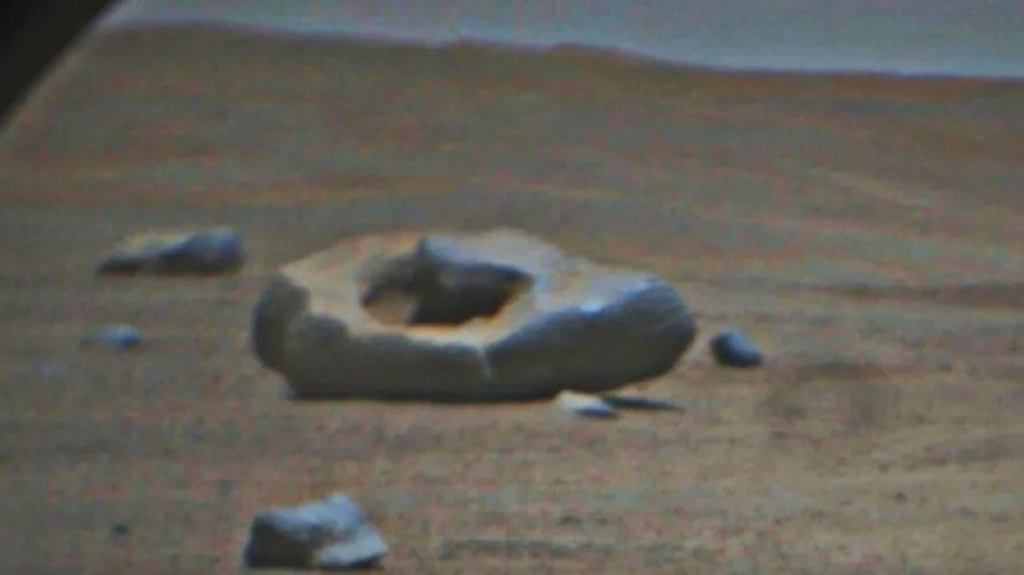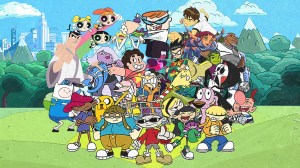If society ever makes its way to Mars, Homer Simpson may very well quickly find himself at home. A new photo taken by NASA’s Perseverance rover has captured something that people are saying looks like a “space doughnut.” In the photo released by NASA over the weekend, a bluish rock can be seen on the planet’s surface with a sizable hole through the middle.
Videos by ComicBook.com
What’s interesting about this particular rock formation, other than the fact a hole’s somehow been blasted through its center, is that its metallic blue hues don’t really aligned with the rusted color of the Martian surface.

How long is Perseverance on Mars?
When it first launched, NASA said the Perseverance mission was guaranteed to last around two years. Now that it’s celebrated its second birthday on Mars and remains in good shape, however, the rover will likely be used by NASA for years to come. With the current hardware and power on board, Perseverance could be powered up for over 14 years if the environment should allow it.
“The samples Perseverance has been collecting will provide a key chronology for the formation of Jezero Crater,” Thomas Zurbuchen, associate administrator of NASA’s Science Mission Directorate in Washington, said of the mission last year. “Each one is carefully considered for its scientific value.”
“Right now, we take what we know about the age of impact craters on the Moon and extrapolate that to Mars,” added Katie Stack Morgan, Perseverance’s deputy project scientist at NASA’s Jet Propulsion Laboratory in Southern California. “Bringing back a sample from this heavily cratered surface in Jezero could provide a tie-point to calibrate the Mars crater dating system independently, instead of relying solely on the lunar one.”
Perseverance has been accompanied by Ingenuity, a helicopter that has provided NASA with additional data. Though it was only intended to fly five times, Ingenuity has successfully completed a whopping 42 flights, allowing researchers to help plot a course for the Perseverance rover across the planet.








